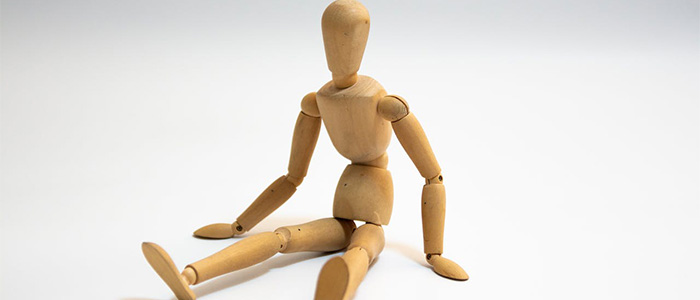Microclimates and Mobility: How Local Weather Patterns Can Affect Joint Health

Weather patterns can have a significant impact on our daily lives, from our clothing choices to our outdoor activities. However, one aspect that often goes unnoticed is its effect on joint health. Discover the intriguing relationship between microclimates and mobility, exploring how local weather patterns can affect joint health.
Understanding Microclimates
Microclimates are small-scale variations in temperature, humidity, and other weather conditions within a relatively small area. They play a crucial role in shaping local environments and ecosystems. Urban areas can generate their own microclimates, often leading to higher temperatures due to the heat-absorbing properties of buildings and pavement, a phenomenon known as the urban heat island effect. This can contribute to heat-related illnesses and exacerbate pre-existing health conditions, particularly in vulnerable populations such as older adults and those with respiratory and joint issues.
Humidity and Joint Pain
One of the most significant ways local weather patterns can affect joint health is through humidity levels. High humidity can make your joints feel stiffer and more painful, especially if you already have conditions like arthritis. When the air is humid, it can cause your body's tissues to retain more water, leading to joint swelling and discomfort.
Conversely, low humidity levels can also be problematic for joint health. Dry air can lead to dehydration of the cartilage in your joints, making them less flexible and more prone to pain. So, whether it's too humid or too dry, your local microclimate can play a role in how your joints feel, and the continuous pain can cause states of depression and hopelessness.

Temperature and Joint Comfort
Temperature is another important factor when it comes to joint health. Extreme cold or hot weather can intensify joint pain for many individuals. Cold weather can cause your muscles to tense up, making it more challenging to move your joints freely. In contrast, hot weather can increase inflammation in the body, leading to discomfort and swelling in the joints.
Don’t forget that people react differently to temperature changes, so some may find relief in warm weather, while others prefer cooler temperatures. Understanding your body's response to your local climate is key to managing joint health effectively.
Barometric Pressure and Joint Sensitivity
Barometric pressure, or atmospheric pressure, is the weight of the air pressing down on the Earth's surface. Changes in barometric pressure, which often accompany shifts in weather patterns, can have a noticeable impact on joint sensitivity.
When the barometric pressure drops, as it often does before a storm, the expansion of tissues in your body can lead to increased pressure on your joints. This can result in pain and discomfort for individuals with sensitive joints or conditions like osteoarthritis. Conversely, when the pressure rises, it can have the opposite effect, potentially reducing joint pain for some.
How to Manage Joint Health in Your Microclimate
Now that we understand how local weather patterns can affect joint health, let's explore some practical tips to help you manage your mobility and comfort.
Stay Informed
Keeping an eye on weather forecasts to anticipate changes in your local climate is a valuable habit. When you're aware of weather changes, such as a cold front or an approaching storm, you can take proactive measures to protect your joints. For instance, you might decide to stay indoors, avoid strenuous activities, or use supportive devices like knee braces when necessary.
Dress Appropriately
Dressing appropriately for the weather is imperative for joint comfort. During cold weather, wearing layers can help you stay warm and reduce the risk of muscle and joint stiffness. In hot weather, opt for lightweight, breathable clothing to prevent overheating and discomfort. Don't forget to wear supportive footwear, as proper shoes can make a significant difference in maintaining healthy joints.

Maintain an Active Lifestyle
Regular exercise is a cornerstone of joint health. Engaging in physical activity helps strengthen the muscles around your joints and improve overall joint function. Consult with a healthcare professional, a physical therapist, or your chiropractor to develop an exercise routine tailored to your specific needs and limitations. They can provide guidance on exercises that are safe and beneficial for your joint health.
Relocate
It's worth noting that for individuals grappling with joint discomfort in colder and damper regions, a change of scenery might be on their minds. Take, for instance, someone who lives in Canada and is negatively affected by the cold weather. They must be experiencing joint aches on a daily basis. Under such circumstances, it might be an appealing solution to relocate to the Sunshine State. With its warm and sunny climate, moving from Canada to Florida can significantly impact one's joint health and overall well-being. Besides the weather, other factors come into play when making such a move, including lifestyle preferences and access to healthcare resources. If you're considering such a relocation, ensure you plan meticulously and hire professional movers for a smooth transition to your new, joint-friendly environment.
Stay Hydrated
Don’t underestimate the power of proper hydration for maintaining the health of your joints, particularly in dry climates. When you drink enough water, you ensure that your joints are adequately lubricated, reducing friction and discomfort. Make it a habit to monitor your fluid intake throughout the day, especially during hot and dry weather conditions. Herbal teas, water-rich fruits, and vegetables can also contribute to your overall hydration.

Consider Supplements
Some individuals find relief from joint discomfort by incorporating supplements like glucosamine and chondroitin into their daily routine. These supplements are believed to support joint health by promoting cartilage development and reducing inflammation. However, before starting any supplement regimen, consult a healthcare professional to determine whether these products are suitable for your specific needs and medical history.
Final Thoughts on How Local Weather Patterns Can Affect Joint Health
Local weather patterns can affect joint health and cause discomfort, but by understanding the connections between microclimates and our bodies, we can take steps to mitigate their impact. Whether it's high humidity, extreme temperatures, or changes in barometric pressure, adapting to your local climate and making informed choices can help you maintain mobility and comfort.
Posted In:
Joint Health
